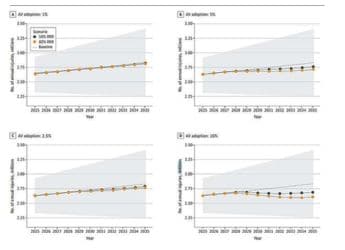- Home
- Mobiles
- Mobiles Features
- OnePlus CEO Pete Lau Outlines Strategy That Helped It Lead India's Premium Smartphone Market
OnePlus CEO Pete Lau Outlines Strategy That Helped It Lead India's Premium Smartphone Market

Photo Credit: Bloomberg
India is arguably the world's toughest smartphone market - just ask Apple. Yet Chinese manufacturer OnePlus has found a path to success in the country of 1.3 billion.
As Pete Lau, OnePlus's co-founder and chief executive officer, describes it, OnePlus targeted younger users with stylish and affordable Android-based phones. Rather than plastering shops with ads, student ambassadors promote the Shenzhen-based company's products. OnePlus also sponsors cricket games, breaking a no-advertising pledge it has in other places.
Thanks to those efforts, OnePlus commanded 40 percent of India's premium smartphone market in June, compared with zero when it arrived in 2014, according to Counterpoint Research, which defines the segment as one where devices cost Rs. 30,000 ($435) or more. OnePlus is ahead of Samsung Electronics Co., which has a 34 percent share, and Apple's 14 percent. Long term, Lau is betting that he'll be able to outrun rivals at the top end of the world's fastest-growing smartphone market.
"The premium smartphone segment may be small, but buying power among young Indians is surging and will create a huge opportunity by 2020," Lau, 43, said in an interview. "We have a standard product across the globe, we don't do a sub-$100 (roughly Rs. 6,900) category for India. Lower-tier products require compromises that we are unwilling to make."
To be sure, OnePlus isn't even in the top five when it comes to India's broader smartphone market, which includes phones that cost less than 30,000 rupees. Samsung is No. 1 by shipments, followed by Xiaomi, Vivo, Oppo, and Huawei, according to Counterpoint.
OnePlus usually introduces a single new smartphone model every year using premium chips, screens and materials. Based on simple designs without flashy colours and features, the phones usually cause a buzz on Android forums when they debut. The phones are sold in North America, Europe, China and other parts of Asia.
India, the world's second-largest smartphone market, will have almost 500 million users by 2022, compared with 337 million this year, according to eMarketer. Success has been elusive for Apple, which forced out three top sales executives in June as it seeks to overhaul its operations in the country. While the Cupertino, California-based company offers zero-interest payment plans and cash-back incentives, its products are beyond the reach of most shoppers.
"OnePlus's strategy of packing the best specs into their phones and offering the most competitive price seems to have helped," said Rushabh Doshi, a research manager at Canalys. "Its pricing strategy has appealed to the cost-conscious and flagship-aspiring consumers in India who want to own the 'best' smartphone in the market but at a competitive cost."
Lau doesn't speak any of India's 22 official languages, not even English, but language hasn't been a barrier. He wants to expand OnePlus's retail presence beyond a single store in downtown Bangalore, open a research facility and even make the city a second headquarters after China. Almost a third of OnePlus's $1.4 billion (roughly Rs. 9,600 crores) in revenue came from India last year.
"We try not to be overly distracted by what's going on in the market or our competition," said Lau, who started as a hardware engineer at China's Oppo, another smartphone maker that's pushing aggressively into India. Another rival, Xiaomi, recently held an initial public offering as it seeks to expand abroad. Asked whether OnePlus was ready to do the same, Lau said, "We don't need funds and I'm not looking to retire - I have at least 30 years ahead of me."
© 2018 Bloomberg LP
Catch the latest from the Consumer Electronics Show on Gadgets 360, at our CES 2026 hub.
Related Stories
- Samsung Galaxy Unpacked 2025
- ChatGPT
- Redmi Note 14 Pro+
- iPhone 16
- Apple Vision Pro
- Oneplus 12
- OnePlus Nord CE 3 Lite 5G
- iPhone 13
- Xiaomi 14 Pro
- Oppo Find N3
- Tecno Spark Go (2023)
- Realme V30
- Best Phones Under 25000
- Samsung Galaxy S24 Series
- Cryptocurrency
- iQoo 12
- Samsung Galaxy S24 Ultra
- Giottus
- Samsung Galaxy Z Flip 5
- Apple 'Scary Fast'
- Housefull 5
- GoPro Hero 12 Black Review
- Invincible Season 2
- JioGlass
- HD Ready TV
- Laptop Under 50000
- Smartwatch Under 10000
- Latest Mobile Phones
- Compare Phones
- Vivo Y50e 5G
- Vivo Y50s 5G
- Realme 16 Pro+ 5G
- Realme 16 Pro 5G
- TCL Nxtpaper 70 Pro
- OPPO A6 Pro 5G
- Honor Power 2
- OPPO A6s
- Zephyrus Duo 16 (2026)
- Asus ROG Zephyrus G16 (2026)
- Realme Pad 3
- OPPO Pad Air 5
- Xiaomi Watch 5
- Huawei Watch 10th Anniversary Edition
- Acerpure Nitro Z Series 100-inch QLED TV
- Samsung 43 Inch LED Ultra HD (4K) Smart TV (UA43UE81AFULXL)
- Asus ROG Ally
- Nintendo Switch Lite
- Haier 1.6 Ton 5 Star Inverter Split AC (HSU19G-MZAID5BN-INV)
- Haier 1.6 Ton 5 Star Inverter Split AC (HSU19G-MZAIM5BN-INV)

















